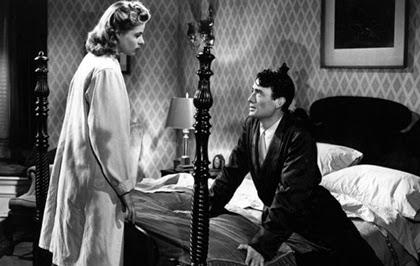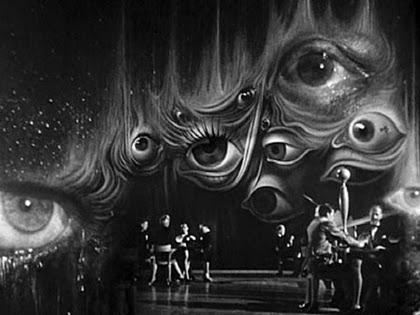 Spellbound (1945) is definitely problematic Alfred Hitchcock. Its reputation rests on the charming stars and incomparable style. Yet the story is a messy psychodrama that doesn't hang together.
Spellbound (1945) is definitely problematic Alfred Hitchcock. Its reputation rests on the charming stars and incomparable style. Yet the story is a messy psychodrama that doesn't hang together.Dr. Constance Petersen (Ingrid Bergman) works for psychologist Dr. Murchison (Leo G. Carroll). Murchison is being replaced by Anthony Edwardes (Gregory Peck), who immediately falls for Constance. But the new arrival isn't Edwardes at all; he's John Ballantine, an amnesiac who'd been in Edwardes' care. The police suspect Edwardes has been murdered and Ballantine's a suspect. Constance and John go on the lam, Constance trying to clear her patient by unraveling his memory.
Spellbound probably works best as a romance. Ingrid Bergman and Gregory Peck are both charming leads, beautiful and generating pitch-perfect chemistry. Bergman starts as a frigid academic, ultimately thawed the Power of Love. But Bergman retains her smarts and skill, and our respect. Peck gets the lesser role: for all his flustered breakdowns, he's charming and sympathetic. Cynics love noting it's unprofessional for Constance to treat and romance John. But Bergman and Peck's smoldering interplay melts any reservations.
The supporting players aren't as compelling. Leo G. Carroll is competent in a role requiring exposition and studied arrogance. At least Carroll sells Murchison's abrupt last act revelation. Rhonda Fleming and Norman Lloyd play inmates as caricatures. One attempts suicide but the character's so broadly drawn we're not especially sympathetic. Michael Chekhov gets a fun role as Constance's mentor: "I hope you have babies instead of phobias!"
 Even Bergman and Peck struggle with Spellbound's inane plot. It's a typical Hitchcock wrong man drama, complicated by the amnesia gimmick. Screenwriter Ben Hecht shows little handle on psychology: psychiatrists openly mock their patients and speak in jargon even off the clock. Ballantine's sent into a frenzy by parallel lines, a device flogged to death like Marnie's flashing red. Naturally, Ballantine recovers simply by remembering his trauma. This isn't worse than most B Movie psychodramas, but we expect better from Hitchcock.
Even Bergman and Peck struggle with Spellbound's inane plot. It's a typical Hitchcock wrong man drama, complicated by the amnesia gimmick. Screenwriter Ben Hecht shows little handle on psychology: psychiatrists openly mock their patients and speak in jargon even off the clock. Ballantine's sent into a frenzy by parallel lines, a device flogged to death like Marnie's flashing red. Naturally, Ballantine recovers simply by remembering his trauma. This isn't worse than most B Movie psychodramas, but we expect better from Hitchcock.Fortunately, Hitchcock's direction is superb. Admittedly, there are cheesy gags like the "opening doors" or third-person shots of milk glasses and revolvers. But Hitchcock nails everything else: the moody atmosphere, glamorous photography and edgy pacing. The standout dream sequence was designed by Salvador Dali but actually shot by William Cameron Menzies. Hitchcock and Menzies invest the bizarre imagery of eyes and swooping wings with real energy, making it more than a gimmick. Miklos Rosza contributes a melodramatic score laced with theremin music for Ballantine's blackouts.
Spellbound's appeal is obvious. Ingrid Bergman and Gregory Peck make a wonderful pairing, and Hitchcock's direction is eerily beautiful. Aside from curmudgeons like me, who cares about the plot?

